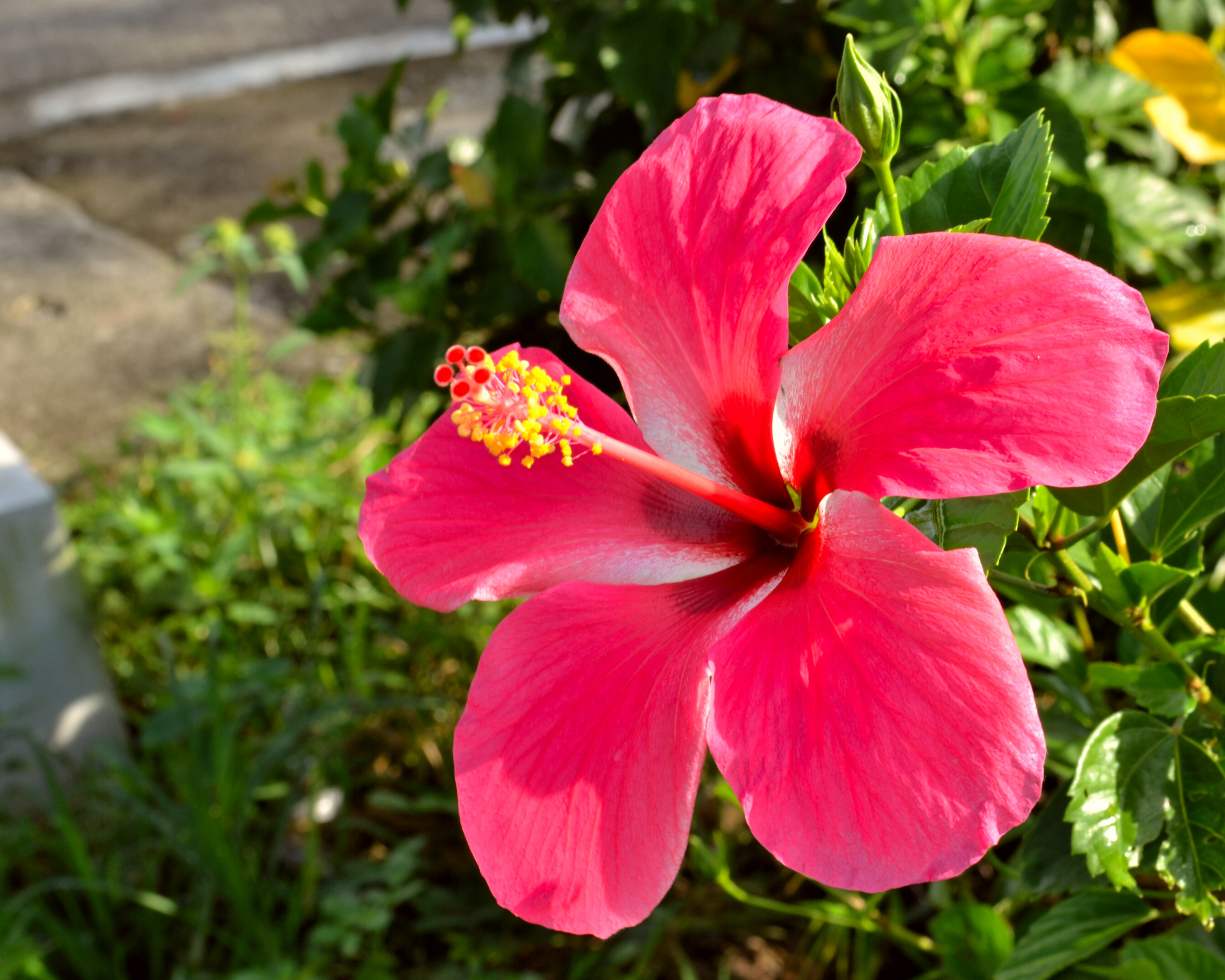Last Updated on October 8, 2022 by Real Men Sow
Gumamela (Hibiscus rosa-Sinensis) is a native of Southeast Asia. Other names include shoe flower and tropical hibiscus. This flower is also known by the name rose mallow, as it belongs to the Malvaceae family, which means that its cousins are okra and cotton.
The gumamela flower can come in white, pink, purple, yellow, red, yellow, and peach. The plant is cultivated by gardeners in more than 300 countries. The flowers and leaves are used primarily as ornamental plants. Some hibiscus can live for more than 50 years.
Characteristics of Gumamela
Gumamela is an evergreen shrub that grows quickly with dark green, glossy leaves and dicot flowers. They are oval-shaped and measure 3 to 4 inches in length. The leaves’ edges are often slightly serrated. They are arranged in a spiral and alternate along a long stalk.
How Does it Grow?
There are many cultivars of gumamela that can grow up to 30ft tall. Some varieties are dwarf and can only grow up to 2ft in height. You can train them to look more like trees or bonsai.
It will remain green in tropical climates all year, but it will freeze to the ground in colder areas. To help conserve energy, cut off any frostbitten branches. The plant will usually return to its roots after winter. The leaves of tropical hibiscus are sensitive to cold temperatures.
Landscaping with Gumamela
Plant gumamela in spring, summer, or fall. You should place them about 3 to 6ft apart. Hibiscus shrubs make great hedges. They are also good foundation plants and can be used to anchor buildings and structures to the landscape. You can make it look like a tree by removing the lower branches as it grows. It will then grow taller and take on the shape of a tree.
Planting Gumamela
When you are starting gumamela from seed, soak the seeds in warm water for about an hour before sowing. Start the seeds indoors approximately 12 weeks before the last frost or outdoors after the last frost.
You can also start them from cuttings, seedlings, or larger plants found at a nursery. Mature plants can be divided during spring and planted in the ground or in containers.
General Care For Gumamela
Cold temperatures make tropical hibiscus leaves turn yellow and fall off. Hence, it is crucial to learn more about how to take care of them.
Best Soil To Grow Gumamela In
Well-drained, rich soil is a great growing medium for hibiscus. The ideal soil is a mixture of 1 part potting soil, 1 portion vermiculite, perlite, and 2 parts peat moss. It drains well and has good drainage. It likes soil that is slightly acidic. Add compost or another organic material to sandy soil. Use clay soil as much as possible, but mix it with looser soils to ensure drainage.
Watering Gumamela
Hibiscus plants need at least one inch of water per week. Although they can tolerate drought conditions, they need water to thrive in hot and dry areas. The roots should be irrigated, and the leaves should be avoided. The shrubs like to be kept moist, but they don’t like being wet.
Light Conditions
Hibiscus thrives in full sunlight, but it can tolerate partial shade. Shaded conditions yield more flowers while sunnier conditions give off more flowers. Too much shade can cause a plant’s growth to be too lopsided. You should give the hibiscus enough light to grow well.
Pruning
During the growing season, prune it back to encourage flowers to blossom. When you are pruning, cut the branches back to the stalk. Cut off flowers before they form seed heads to encourage rebloom.
Feed them two times a month during the warmer months or amend the soil with compost to promote blooming. Periodically check the plant for pests such as whiteflies or aphids, and apply insecticide or pesticide as needed.
What Are the Uses of Gumamela?
The gumamela plant has many medicinal and culinary uses. As a substitute for spinach, young hibiscus leaves can be used. They can also be eaten raw or cooked and contain trace amounts of iron, phosphorus, thiamine, and niacin. Flavonoids, anthocyanins, and polyphenols are also found in flowers.
Although the root is fibrous, it can be eaten. It can also be used as tea. Make the tea by soaking the petals in water. The water can be boiled and then added to fresh or dried flowers. Some people use leaves and flowers to make soups and curries. You can make jams, jellies, and perfume with flowers.
The flowers of Gumamela are used in China to shine shoes. The flowers can be crushed and used to make shoes black. They can also be used to dye eyebrows and hair.
What Can Gumamela Cure?
Some cultures also use hibiscus for alternative medicine. Wound healing is one of the primary uses. A poultice is made from ground petals and applied to wounds. This mixture can also be used to treat boils and swelling. Kelantan’s antidote against poison is a mixture of red and white flowers.
Clinical trials showed that hibiscus and compression stockings were effective in closing ulcers. A traditional use of hibiscus was to stimulate hair growth. Positive results were seen in patients suffering from alopecia. Another study suggests that hibiscus might be effective in treating tuberculosis. Samoans give hibiscus as pain relief to pregnant women to reduce the pain from labor.
These flowers can be used for:
- Antiseptic for treating and healing skin bronchitis.
- sunburn
- Mumps, bladder infections, antimicrobial diabetes, cracked feet blood pressure hemorrhoids ascariasis for diuretic
The leaves can be used to treat:
- Anti-inflammatory agent for headaches, indigestion and diarrhea

